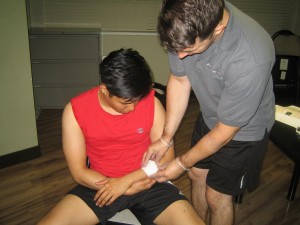Warts are characterized as elevated bumps on the skin that are caused by the HPV (human papillomavirus). Warts have been present even in the ancient times. Even though they are not dangerous, they can be unsightly, contagious and painful in some cases.
Types of warts
Warts are categorized in five main types and each manifests on a different body part as well as having a distinct appearance.
- Common warts typically appear on the toes and fingers but also in other body parts. They have a grainy and rough appearance with a rounded top and grayish in color than the surrounding skin.
- Flat warts usually appear on the arms, thighs and the face. They are small in shape and not striking due to their flat tops and can be pink, yellow or brown in color.
- Plantar warts appear on the soles of the feet and they grow into your skin. If there is a small hole in the base of your foot that is surrounded by skin that is hardened, it is a plantar wart. This type of wart can make walking uncomfortable.
- Periungual warts grow beneath and around the fingernails and toenails. They are usually painful and can affect the growth of the nail.
- Filiform warts usually grow around the nose or mouth and oftentimes in the neck or beneath the chin. These warts are small and have a form of a small flap or tag of skin that is similar to the skin color.
When to consult a doctor

It is best to consult your doctor if the warts grow on the face or other sensitive parts of the body or if there is bleeding or signs of infection. A painful wart or one that changes in color should be checked by your doctor.
Individuals who have warts and diabetes or any immune deficiency disease such as HIV or AIDS should consult a doctor.
Treating warts at home
Warts usually go away over time but they can be treated at home. Majority of warts typically respond well to treatments that are readily available at drugstores.
Always remember that warts can spread to other body parts since they are contagious. In case you are going to use a pumice stone or fingernail file to rub the wart, avoid using it on other body parts.
If warts are present on your feet, avoid treating them if you have diabetes. It is best to consult your doctor first. Diabetes can lead to the loss of sensation in the feet, thus you can injure yourself without realizing it. Avoid removing warts on your face or on sensitive parts of the body using home treatments.
The freezing treatments involve spraying cold air on the wart. This will allow you to scrape the surface of the wart. This is the ideal treatment if you want to remove a wart quickly but it is not strong enough to remove all warts.
Products that contain salicylic acid can be used daily. They work best if the wart is soaked in water for 15 minutes before the application of the treatment.
